“I’ve got a lot of circles!!”
If you hear a Japanese kid saying something like this with a big smile, can you guess what the circles are?
Circles play an important role in Japan. Today, let me show you some circles in Japan.
☆Correct!
Take a look at the photo below. Let’s say this is a math question sheet for a first grader. As you can see, the teacher marks the correct answers with circles using a red pen. If the student gets a perfect score, the teacher, especially for little kids, even draws a hanamaru. Hana means flower and maru means circle, so hanamaru is a flower-like circle drawn with a red pen. Many elementary school teachers can draw it skilfully in one stroke.
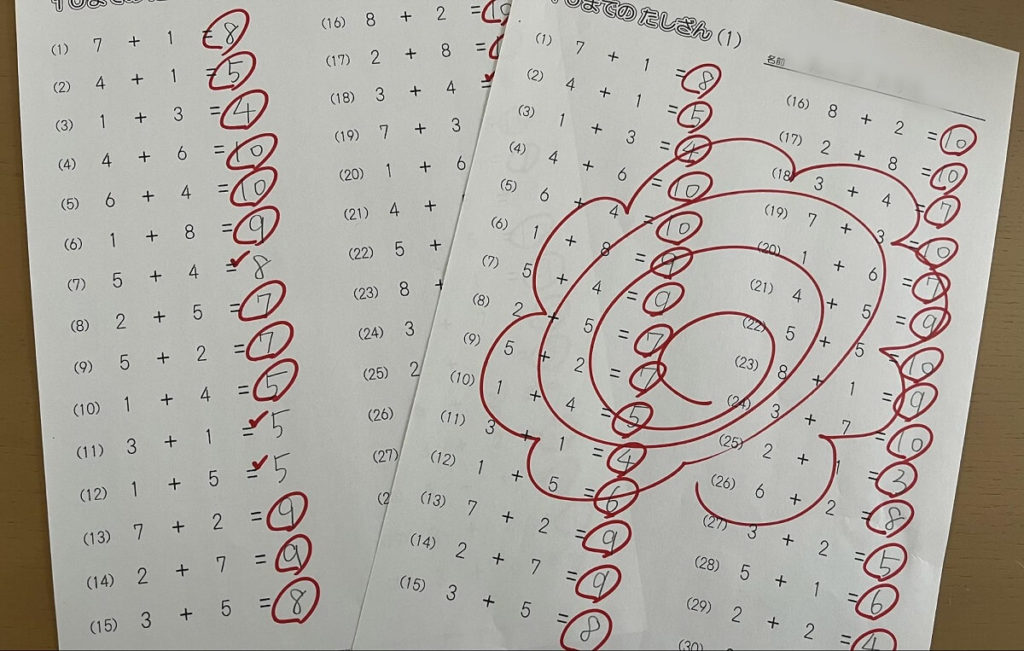
~A story of Hanamaru~
There is an udon restaurant chain called “Hanamaru Udon.” According to the company, the founder Mr. Maeda didn’t get hanamaru at school as a kid. The concept of the restaurant is to serve what customers want with surprise and excitement and to get hanamaru from the customers. The hanamaru logo with its name written in hiragana letters is cute and family friendly!
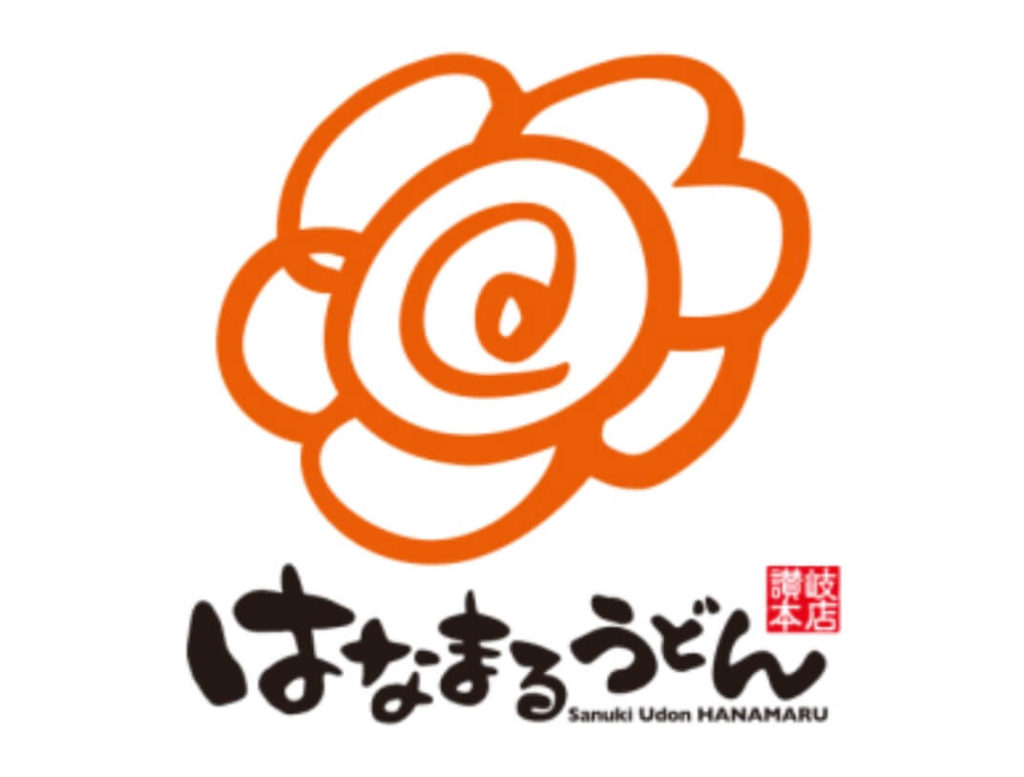
☆ Period
Instead of writing a period, we use a small circle at the end of each sentence in Japanese. This is what Japanese students learn in Japanese class, and if they forget to write it, it takes away a bit from their score.

Actually, we can’t see the circles in books from ancient times. It is said that Japanese people started using it in the Meiji era (1868-1912), influenced by English sentences. This might have been because it helps readers understand and read sentences more easily.
On the other hand, there are some occasions where we don’t use the circle. Here are the examples.
- New Year’s Card
- Wedding invitation
- Certificate
The circles are not used in these matters of congratulation. Why? I mentioned that the circles are meant as a kindness for readers, but ironically, some people took it like, “You can’t read the sentences if there are no circles.” To avoid that implication and to show, “You are smart enough to read the sentences even without circles,” these situations without circles came to be. This custom still exists even now.
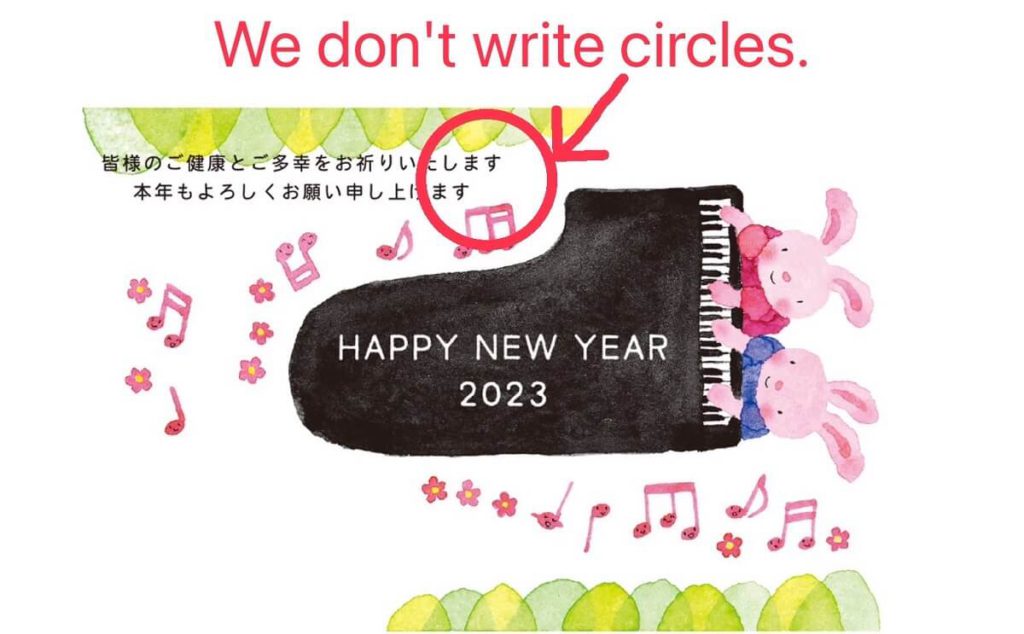
☆Zen
If you are familiar with Zen, you might have heard the word “enso(円相).” It is a circle drawn with a single stroke in Zen calligraphy. This circle means everything has a beginning and ending at the same time, and some people say it shows infinity. According to this thought, the circle should be one without a start and finish. The circle I drew and used as a cover picture for this article is a bad example! I need to receive more austere training!!
☆National flag
Last but not least, you can see a red circle in the center of our national flag. It has the nickname “Hinomaru,” and it can be translated as “Circle of the sun.” Yes! This red circle is suggestive of the sun for many Japanese people, and that’s why many Japanese kids draw the sun in red I guess.
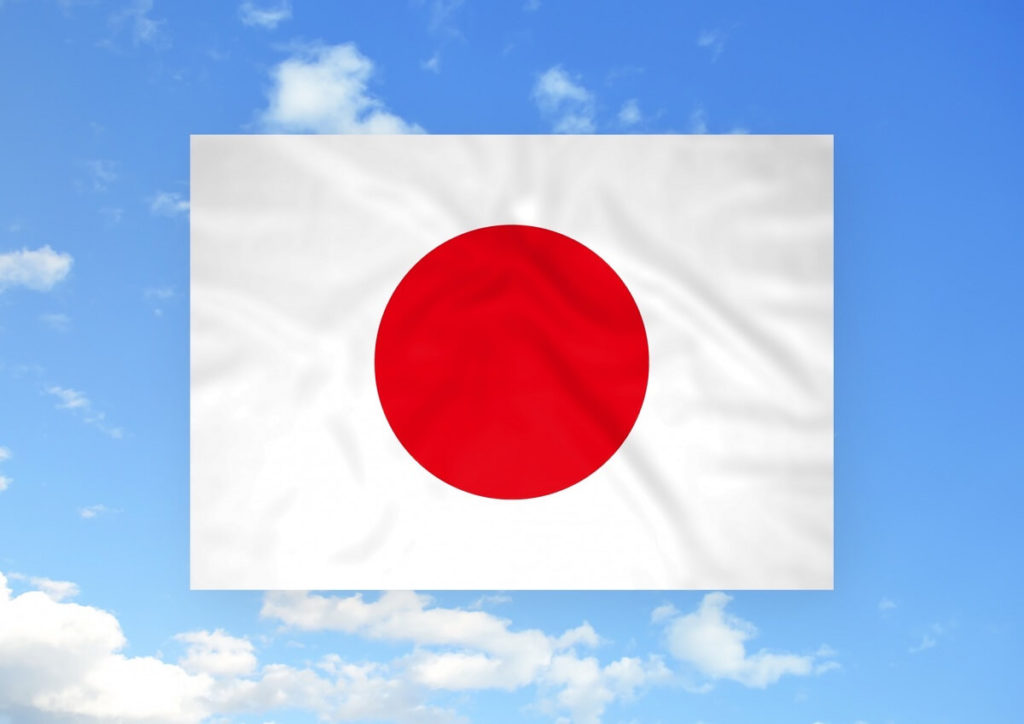
☆Thanks for reading!
Lastly, let me introduce the Japanese word “Enman(円満).” En is another way of describing a circle. Enman means a situation where things are solved peacefully. We often use this word when we describe a happy marriage. I’m not sure if it’s only me, but I feel circles have positive vibes! I hope these peaceful circles will be contagious all around the world! What do circles mean in your country?
Working for an English language school. My source of energy is our students’ smiles full of curiosity. I love visiting my friends in and outside of Japan.

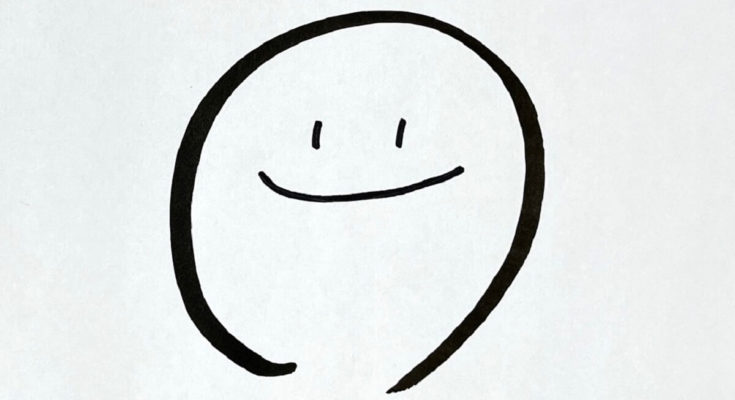

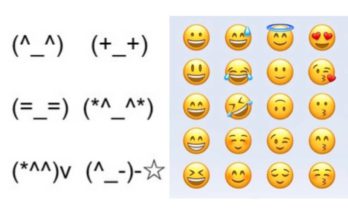

 HTJ has a YouTube page! Check it out
HTJ has a YouTube page! Check it out
Hi, Rei san!
I enjoy your short articles like Takako san!
I didn’t know “hanamaru” is a Japanese culture!
In addition, I had no idea why there are no “maru” in some documents such as certificates.
I used to practice “Egao Moji” which is a kind of casual heartwarming calligraphy.
It was so hard for me drawing “maru”, but I remembered it was fun thanks to your article^^
Thanks for sharing your thoughts and experience related to this article, Akiko-san! Egao-Moji must make everyone calm and happy. I want to try it someday!!